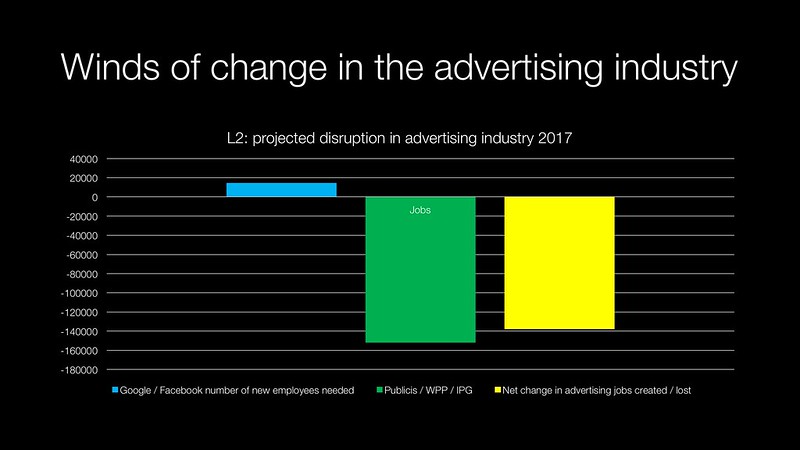Cannes and VidCon – I had the chance to read around a lot of the stuff around the events and listened to Ogilvy’s webinar. Here were the key things that struck me.
There is blind faith amongst brand about the benefits of influencers and social. I find this particularly interesting because it represents a number of challenges to the status quo:
- This first struck me when I saw Heather Mitchell on a panel at the In2 Innovation Summit in May. Mitchell works in Unilever’s haircare division where she is director, head of global PR, digital engagement and entertainment marketing. I asked the panel about the impact of zero-based budgeting (ZBB) and the answer was ducked. ZBB requires a particular ROI on activity, something that (even paid for) influence marketing still struggles to do well
- The default ethos for most brand marketers is Byron Sharp’s How Brands Grow: What Marketers Don’t Know. Most consumer brands are in mature categories, engagement is unimportant; being top of mind (reach and repetition) is what matters
- Brands were looking to directly engage with influencers at VidCon with trade stands and giveaways at the expo. This was brands like Dove. Again, I’d wonder about the targeting and ROI
Substitute ‘buzz marketing’ for ‘influencer marketing’ and this could be 15 years ago. Don’t get me wrong I had great fun doing things like hijacking Harry Potter book launches when I worked at Yahoo!, but no idea how it really impacted brand or delivered in terms of RoI. Influencer marketing seems to be in a similar place.
Publicis and Marcel. Well it certainly got them noticed. There has been obligatory trolling (some of which was very funny). I tried to make a sombre look at it here: Thinking About Marcel (its about a nine minute read) – TL;DR version – its a huge challenge that Publicis has set itself. One interesting aspect to point out is the differing view point between WPP and Publicis. WPP has spent a lot of time, effort and money into building a complete advertising technology stack including advanced programmatic platforms and analytics.
WPP hoped that this would provide them with an unassailable competitive advantage. The challenge is that the bulk of growth in online spend is going to Facebook and Google – who also happen to have substantive advertising technology stacks.
I can’t help but wonder if this shaping is Publicis’ top line thinking? Scott Galloway posted a very sombre chart about this. If Google and Facebook hit their combined revenue targets this year, it will have a dramatic effect on the number of people employed in the major advertising groups.

To put Galloway’s numbers into context, the projected number of jobs lost in the advertising industry this year would be roughly the equivalent of every man and woman around the world currently employed at vehicle maker Nissan. And that’s just 2017.
If you paid attention to the Marcel concept film you would have noticed that the client service director is partly displaced when a client uses Marcel to directly reach out to Publicis experts.
If Marcel, just makes information easier to access internally; it could save the equivalent time equating to almost 1,600 employees (out of Publicis’s current 80,000 around the world).
People equate to billings as these marketing conglomerates are basically body shops in the way they operate. So it will adversely affect the value of the major marketing groups.
If that isn’t grim enough, Galloway doesn’t even bother to take into account the Chinese ecosystems which is digitising at a faster rate than the West. China also has a longer history of platforms and clients being directly connected – cutting out the media agency.
These changes in the advertising eco-system has huge implications about the erosion in brand equity over time. Amazon’s move to surpass other retailers also is about the erosion of brand power. Combine this with the increasing ubiquity of Prime and all brands start to look the same as private labels.
Thankfully the disciples of Byron Sharp still realise that there is power (and lower CPMs) in using television as a mass-advertising medium which is why FMCG product still spend 90% of their budget offline.
The best thing IPG, WPP, Omnicom and Publicis could do right now is spend a lot of money ensuring that every marketing and MBA student have copies of Mr Sharp’s books. If they haven’t been translated into Chinese, that might be an idea as well.
SnapChat is in its difficult ‘second album’ phase. Back when music came on physical media and record labels invested in developing artists as a longer term proposition than a reality TV series there was the ‘second album’ phase. Artists often struggled to bottle the lightning that gave them a successful first album. They usually had the money and resources to throw at it, but it was hard to be a consistent performer.
For example Bruce Springsteen only really became successful in the U.S. with his third album Born To Run – that level of record label support wouldn’t happen now.
On one level SnapChat has matured. It had a big presence at Cannes and its Snap glasses displaced VR technology as the worn product. It has been under assault. Major content providers like the BBC are choosing Instagram’s stories over SnapChat’s offerings. Even Twitter is getting back in the picture. Ogilvy’s team at VidCon talked about how Twitter had been successfully engaging with influencers and offering them support and attractive content monetisation offers.
SaveSave
SaveSave
SaveSave
SaveSave
SaveSave
SaveSave

